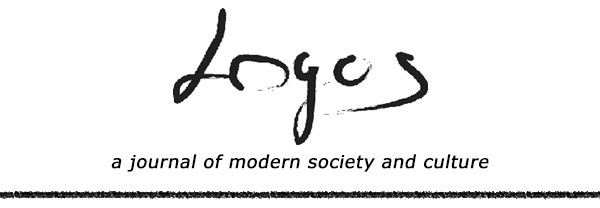John Powers’ Technology and the Making of Experimental Film Culture
Film scholars have in general spent surprisingly little time historicizing, theorizing, and analyzing the technological processes by which films actually get made. Even within studies of avant-garde and experimental cinema, which by necessity center individual filmmakers and their specific artisanal practices, emphasis is usually placed far more on formal analysis – itself leaning heavily on relevant political and philosophical concerns – than on the mechanical tools and innovations that shape the contours of an individual work. Thus, a book that surveys the basic technical materials that have undergirded and, one might argue, offered a coherence to the history of experimental film is not only valuable but long overdue.

John Powers’ Technology and the Making of Experimental Film Culture does just this. Its central contention is that experimental film – nonnarrative, personal cinema that invents new possibilities for and/or interrogates film language – flourishes at the intersection of the tools filmmakers use and the way they imagine those tools’ creative charge. Powers sets out to re-read different films from the (largely, but not exclusively, U.S.) experimental canon that are usually not seen as related by juxtaposing them on the basis of shared techniques. To a reader like this one with catholic interests in the avant-garde, the conjunctures of queer and feminist classics by Jack Smith, Michelle Citron, and Barbara Hammer with meat-and-potatoes staples of formalism by Ken Jacobs, Bruce Baillie, and Nathaniel Dorsky feel natural. The filmmakers’ individual perceptions of the role their shared technologies play in their artistic process do vary considerably, though, and Powers uses these reflections to chart different modes of cinematic praxis.
The first two chapters of the book – on the relatively lightweight 16mm camera made by the Swiss firm Bolex International S.A. (celebrating its centenary this year) and on reversal film stock, respectively – could also be of use to those not expressly interested in the avant-garde, as they offer insight into the tools at an independent filmmaker’s disposal in the latter half of the twentieth century. While the Bolex camera has become synonymous with the poetic mode of filmmaking as individual, personal expression that is taught in art schools, countless future narrative directors also cut their teeth behind it. For its part, reversal film stock (a cheaper alternative to negative film, since it does not require making an internegative en route to a positive print) is often faulted for being overly “grainy.” The particularly “coarse granularity” of one popular stock, Tri-X, leads to a particularly sophisticated and sensitive analysis of Peter Hutton’s films, one of several strong points in the book as pure criticism. Equally insightful is the discussion of a Kodachrome, a notoriously high-contrast film stock that many felt had the power to transport viewers to spiritual realms, through a deft reading of Normal Love built entirely around Jack Smith’s play with the stock’s garish excesses. Powers’ consideration of whether a film stock can be inherently realistic or expressionistic (in the case of Kodachrome and its big bright colors, which Dorsky likened to “medieval stained glass” and “oil paint”) typifies the hermeneutic power of his materialist mode of analysis.
While shooting an experimental film may be a hyper-individual act, the antithesis of Hollywood productions’ army-like operation, often post-production is not fully solitary. The relationships that filmmakers had to forge with lab technicians in order to produce the best release prints possible were ones of intense collaboration. In chapter three, which deals more capaciously with how makers have interacted with labs, we learn about key partnerships such as the one that Hollis Frampton (who himself had worked for a lab) forged over many hours spent color grading his films with Joe Williams of Filmtronics. Many filmmakers, though, had a more adversarial relationship with labs. James Broughton, for instance, lamented that they “are set up just to grind it out” (87). The tension they often felt with lab technicians was sometimes by design, as they tested the labs’ capabilities (as in J.J. Murphy’s experiment Print Generation or Stan Brakhage’s Scenes from Under Childhood, which used the baroque technique of multi-roll printing to create, as Powers eloquently puts it, a “weave of thought and memory” (102)).
In addition to being an essential waystation in the production process for any filmmaker, labs have doubled as de facto archives–at first, not unlike how a dry cleaner has at any point in time enough clothes on hand to rebrand as a consignment shop, as they waited patiently for filmmakers to pick up their show prints, but then over time as more permanent depositories, particularly as negatives get left behind.the time one of the most important labs in the country, DuArt, finally stopped processing film in 2010 (after no less than a 88-year run), it was still housing so many films that not even all of the major archives in the U.S. put together were able to accept and process the entire holdings. They are to be credited for keeping many avant-garde and underground titles extant at all.
The title of the fourth chapter is suggested by Craig Baldwin’s account of what using the machine was like: “for me it was always like holding the jalopy together when it was about ready to fall apart.” Peter Rose, for his part, worries that the sound of a vacuum cleaner from three apartments away could always make the machine skip a few key frames. Unlike the other technologies examined in the book, the optical printer was hardly one unique to the avant-garde. It was used as early as the 1930s in King Kong and Bringing Up Baby. As other scholars, such as Julie Turnock, have highlighted, it was as important to George Lucas and others at the vanguard of Hollywood special effects as it was to the first generation of avant-garde filmmakers that used it. While it spread slowly in the avant-garde, due to its complexity and costliness, once it became commonplace by the 1970s (with the invention of the JK optical printer in 1971) it was there to stay. Powers highlights how it remains the most integral toolkit to many experimental filmmakers’ practice, and the backbone of many MFA programs. In fact, one film department that was the catalyst for the JK’s creation. As department chair at the now-defunct San Francisco Art Institute, Larry Jordan approached local camera wiz Jaakko Kuhri with the need for such a device (“reliable, easy to operate…and… relatively inexpensive so that it can be purchased by individual filmmakers and film teaching schools,” as Kuhri’s patent stated).
Enabling a partially-shot film to be rephotographed for the addition of visual effects or multiple complete new layers of imagery, the optical printer is the film artist’s ultimate gadget. Without it, the accretive abstract expressionism of a filmmaker like Phil Solomon would be unthinkable. Powers highlights how Solomon’s use of the optical printer centers around a paradox of burial and uncovering, merging the “alchemical and heretic” imperatives the device as part of a broad, if subtle, epistemological undertaking.
Technology and the Making of Experimental Culture may lean a bit heavily on how filmmakers theorize their own work; however, that feels appropriate given the book’s mission of exploring what the technologies meant to filmmakers. An unexpected but welcome consequence of this focus is the demonstration that the meaning we ascribe to even the most rarified, critically neglected films often arises not from what is actually onscreen but from the way we hear people talking about them. More on the transition from an exclusively analog gestalt to the hybrid present that experimental film now inhabits would have been welcome, so as to open the question of whether and to what extent the auras around the book’s four core technologies have shifted. It felt as though the continuities that some filmmakers have found between analog and digital may be overstated. While the creative possibilities of digital video remain considerable, one has to feel the visual poverty of much contemporary video art in comparison to the richness, dynamism, and boundless creativity of the decades of avant-garde film reanimated herein.

